Ultimate Nuremberg Itinerary for One Perfect Day

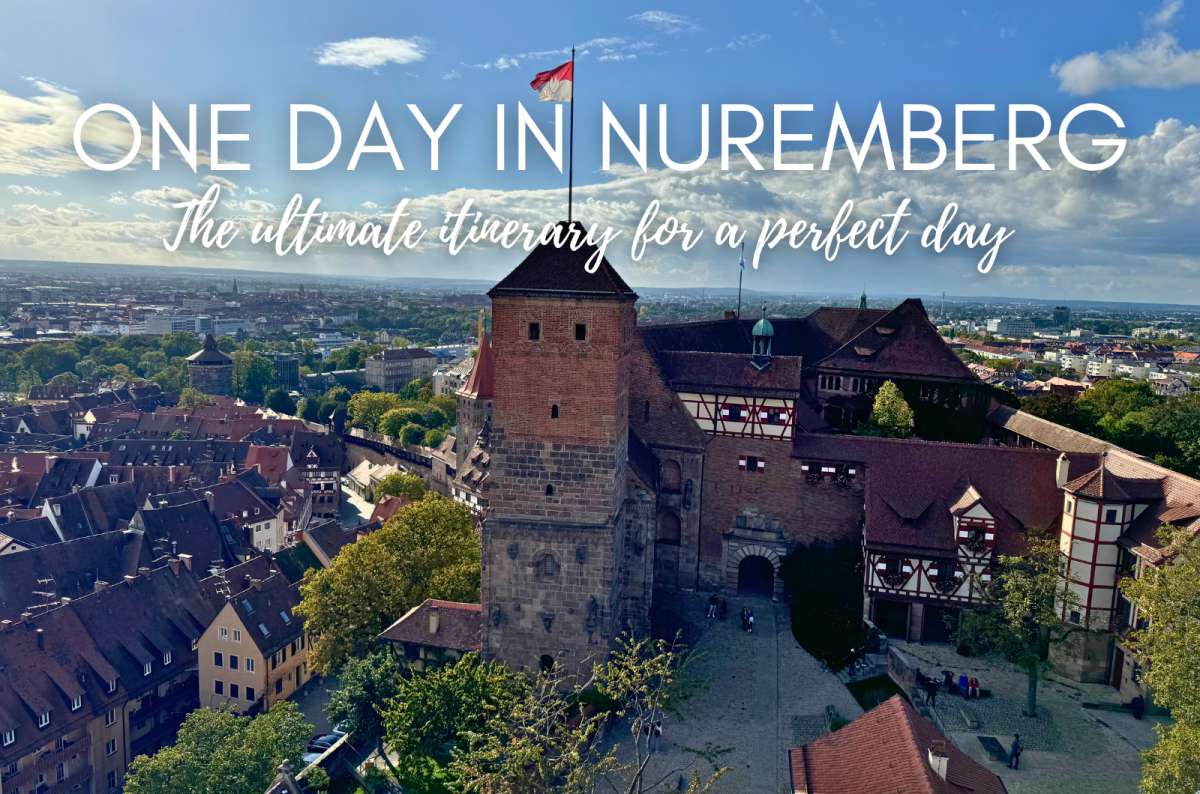
Planning a trip to Nuremberg for a day and looking for the best itinerary? You’re in the right place. I live a couple hours away, so I’ve been to Nuremberg a few times and can give you all the insights I’ve learned firsthand. I can confirm it’s worth popping over even if you have just a day—it’s compact but loaded with history and interesting spots.
I personally hate checklist-style visits where you hop from one famous landmark to the next, ending up exhausted but somehow still feeling like you barely saw anything. That’s why my Nuremberg itinerary connects the best sights with the smartest route, skips the tourist traps, and adds a few unique spots you’d never find by following some recycled blog post.
Read more of my Germany travel guides.
Sometimes, all you need to do is take the first step... I've filtered out the best hotels in Nuremberg for you.
Save it for yourself to come back to later, or share with your friends on social media!
Here’s what you’ll get:
-
A map of the route so you can clearly see which spots you’ll be hitting.
-
A step-by-step itinerary for one full day in Nuremberg based on my own real visits, with walking times, exact durations at each stop, entry prices (as of 2025).
-
Insider tips at every stop—like what to skip, where to sit, and how not to waste your time.
-
And finally, my personal restaurant picks, whether you want your schnitzel fresh and your beer cold, or you're just done with German food altogether.
-
I also included a FAQ section covering getting there, parking, crowds, timing, and where to go next.
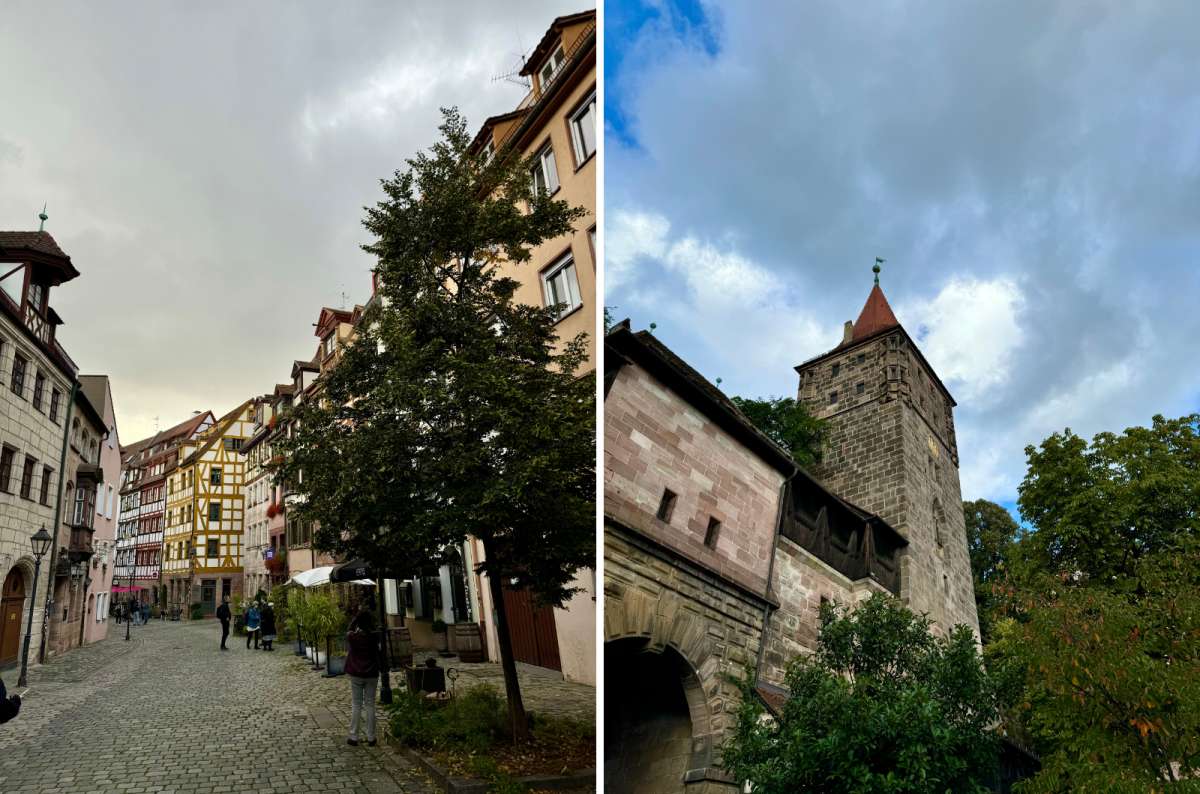
Strolls through Nuremberg Old Town are great, but let‘s take it to the Next Level with my itinerary
A quick look at your one-day Nuremberg itinerary
-
Start at Nuremberg Castle—Climb the tower, peek into the Deep Well, and get your bearings with a city view.
-
Albrecht Dürer’s House—Half-timbered house of Austria’s oldest art influencer.
-
Weissgerbergasse + Lunch at Bratwursthäusle with a peak at St. Sebald Church—Most photogenic street + best sausages in town. And a church with snails in it.
-
Hauptmarkt (main square) + Frauenkirche—Daily market stalls, a dry “fountain” with 40 golden figures, and the Gothic Church of Our Lady looming overhead.
-
St. Lorenz Church + Kreuzigungshof—Nuremberg’s biggest church and its quietest courtyard—see both. For balance, you know?
-
Germanisches Nationalmuseum—See just the highlights with the 60-min audio guide.
-
Handwerkerhof—Fake medieval village done surprisingly well. Snack + souvenir stop.
-
Nazi Party Rally Grounds—Massive site of Nazi propaganda rallies. First of two places not in Nuremberg’s Old Town.
-
Nuremberg Trials Memorial (Courtroom 600)—Where justice finally showed up and the bad guys went down. Finish the day here before returning to Old Town for dinner.
>> Optional extras, day trips, and Nuremberg restaurant recommendations at the end of the article.
Hotel recommendation: Park Plaza Nuremberg (you’ll want to spend the night to have a full day in Nuremberg—this isn’t a Nuremberg day trip that you can do in 6 hours and have time to drive there and away on the same day)
Pro tip: If you’re staying longer, check out my full guide to Nuremberg’s top things to do so you can extend this itinerary with a few more spots based on your personal preferences. Find it here:

Map of your Nuremberg day trip: walking route
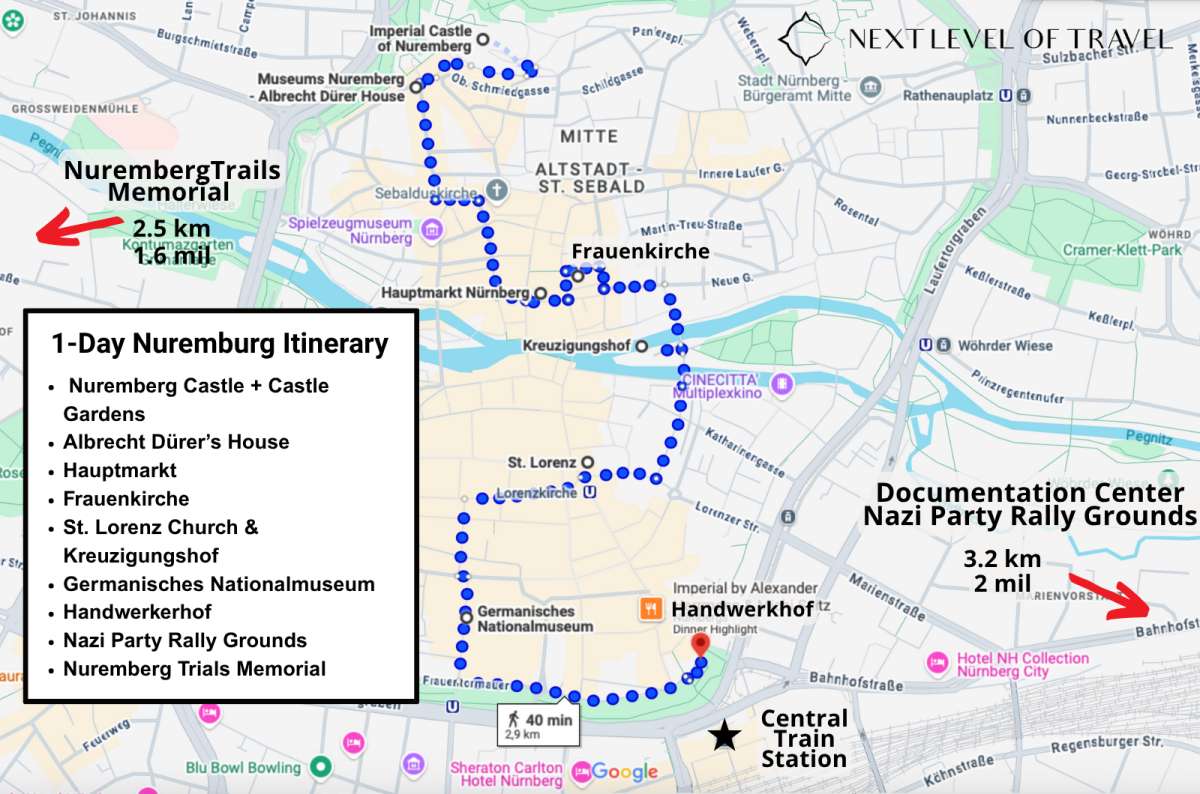
You’ll easily walk though Nuremberg Old Town and then need a set of wheels for the last two stops on this itinerary
Quick lay of the land
Nuremberg is built around its Old Town, surrounded by medieval walls and “topped” with a castle (it’s on slightly higher ground—don’t expect a real hill). The Pegnitz River runs through the middle—castle, Albrecht Dürer’s House, and Hauptmarkt on one side, St. Lorenz and the museums on the other.
Everything worth seeing in a day in Nuremberg is packed inside those walls and walkable. The train station is just outside the southeast gate. A couple of Nazi history spots—like the Nazi Rally Grounds and the Courthouse—are further out, but still doable if you plan for it.
That’s it. Easy peasy.
Stop 1 of Nuremberg itinerary: Nuremberg Castle + Castle Gardens
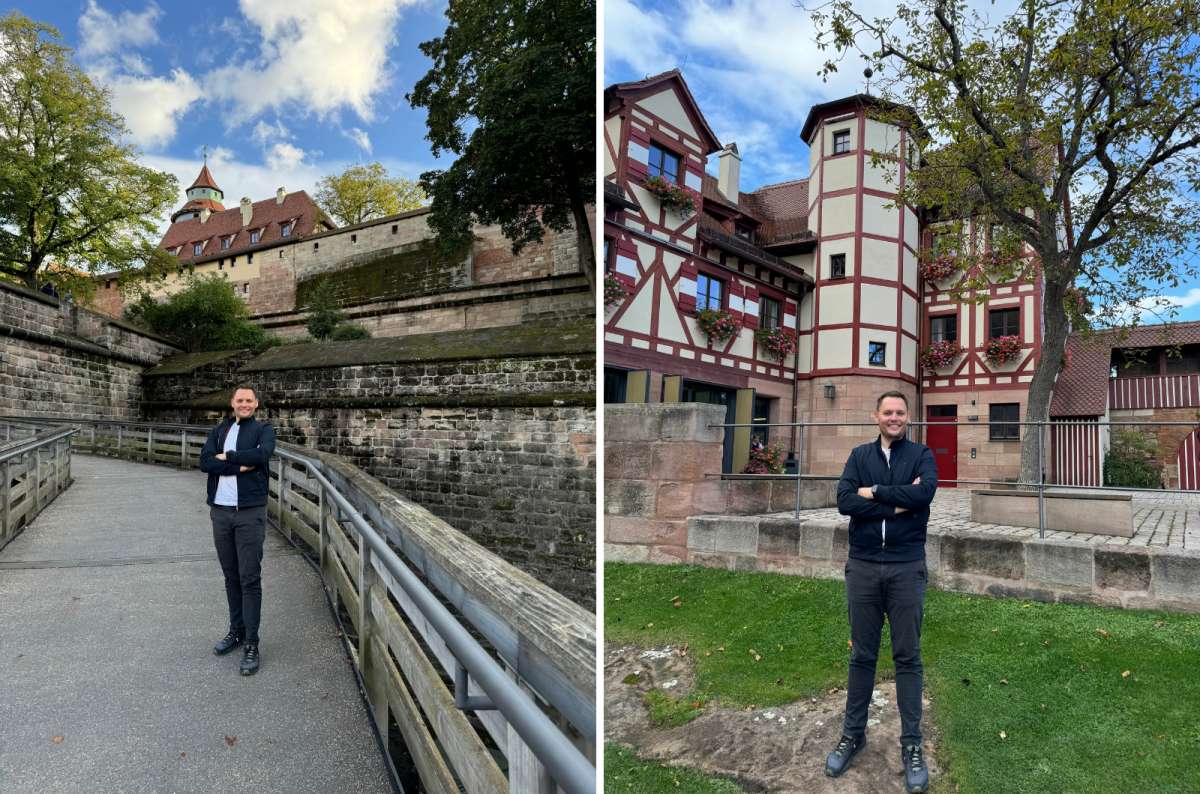
The Nuremberg Castle might be an obvious choice, but it sure is worth it
-
Time spent here: 1.5 hours
-
Entry: EUR 4 (includes Deep Well, Sinwell Tower)
-
Opening hours:
-
April to September: daily 9.00 am to 6.00 pm
-
October to March: daily 10.00 am to 4.00 pm
-
-
Jan’s notes: See the outside, walk the castle walls, do the Deep Well tour, skip the interior. Quick stop at Weissgerbergasse on the way down—great photo op, takes 5–10 mins.
Start your full day in Nuremberg by 9 am—otherwise you’ll run out of time and some stops on this itinerary will need to be left for the next day. Don’t say I didn’t warn you when you run out of time to see everything!
The Imperial Castle of Nuremberg is located in the far north of Old Town. It’s among the grandest medieval fortifications in Europe. I thought the interiors weren’t as cool as the exteriors, so for today’s plan, you’ll be staying outside. Admire the architecture, walk the walls, and stroll the castle gardens (all for free). You’ll already see some of the timber-framed buildings (part of the castle complex) that are a huge part of Nuremberg’s charm.
What I do recommend is paying EUR 4 for a short tour of the Deep Well (wait for them the lower a candle into that thing to see how deep it is—the name doesn’t lie!) and a chance to climb the Sinwell Tower. It gives you a nice overview of Nuremberg’s spiky rooftops. It’s the perfect way to start your day in Nuremberg.
Then, walk 5 minutes down the cobblestoned roads to your next stop.

Stop 2 of Nuremberg itinerary: Albrecht Dürer’s House
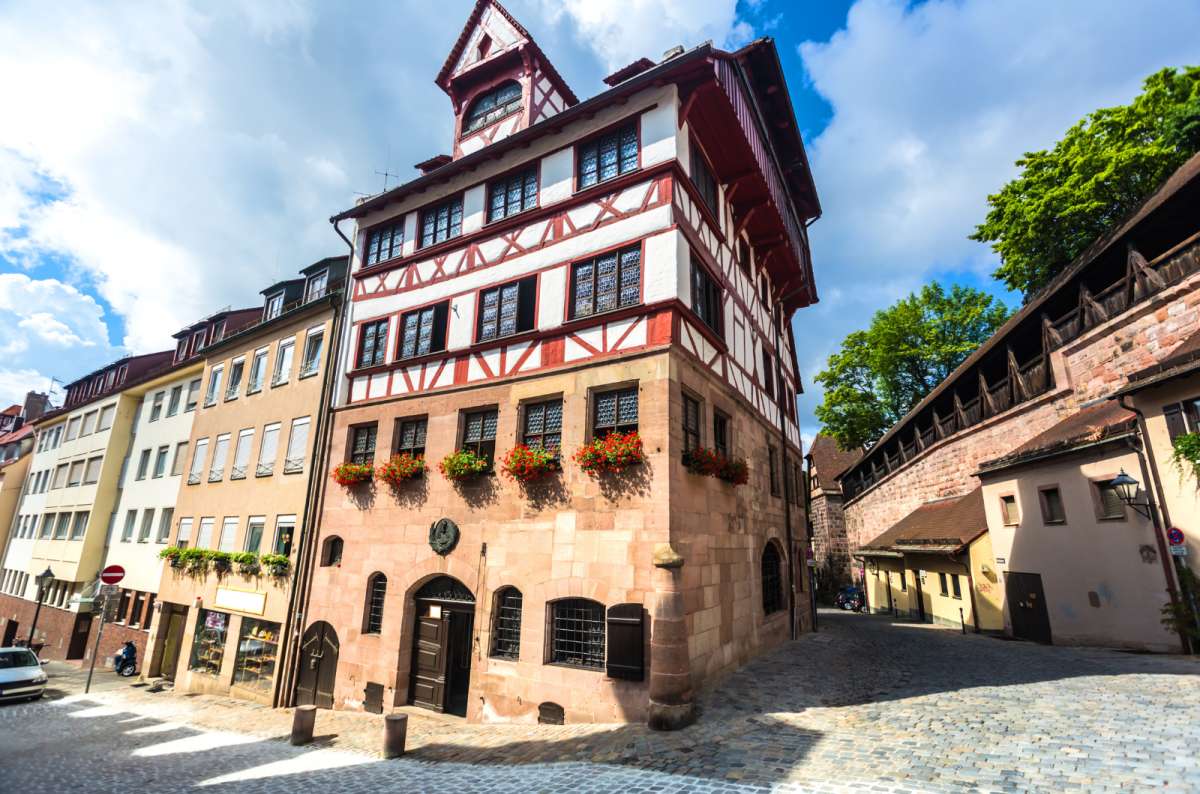
The house is as great as the man that used to live here @ Albrecht Dürer's House
-
Time spent here: 45 mins
-
Distance from last stop: 5 mins (300 m/0.2 miles)
-
Entry: EUR 7.50
-
Opening hours:
- 10.00 am to 5.00 pm (Tuesday to Friday)
- 10.00 to 6.00 pm (Weekend)
-
Jan’s notes: My personal favorite stop in Nuremberg. This guy was an art influencer in his time! You can skip the “Agnes” tour unless you really enjoy awkward acting.
You know those half-timbered houses Nuremberg is known for? Albrecht Dürer’s House is one, and you get to go inside.
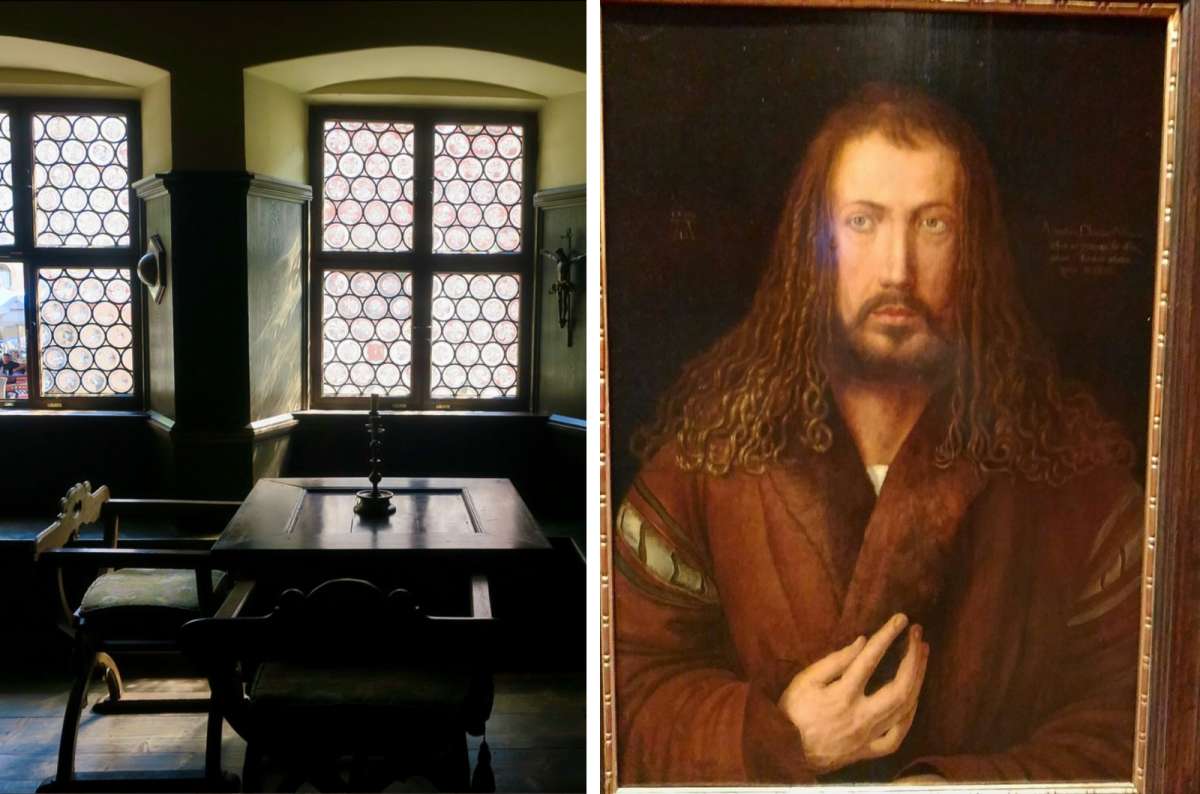
Albrecht Dürer's House shows you what geniuses lived like... feel free to inspire yourselves
The museum is 5 slightly crooked floors of the artists life—you can see his artwork, obviously, but also his studio and living quarters, all well-preserved and partially reconstructed to still look old. I really liked it, because it felt authentic and not too fake.
You can even get a guided tour by Albrecht’s wife, Agnes, but yes, it’s as cheesy as it sounds, and that was the one fake part that you either have to embrace or skip. I skipped. The tour takes 60 minutes, I took 45 to do it on my own.
Who was Albrecht Dürer? He was somewhat of an influencer of his time. Not that many artists were famous all across Europe and had their own brand. Impressive and multitalented—he did oil paintings, watercolors, engravings, and prints, among others.
When you’re done with Dürer’s House, it’s time to walk one of the most charming alleys in Nuremberg, followed by a deserved sausage break.
Stop 3 of Nuremberg itinerary: Weissgerbergasse and lunch near St. Sebald Church
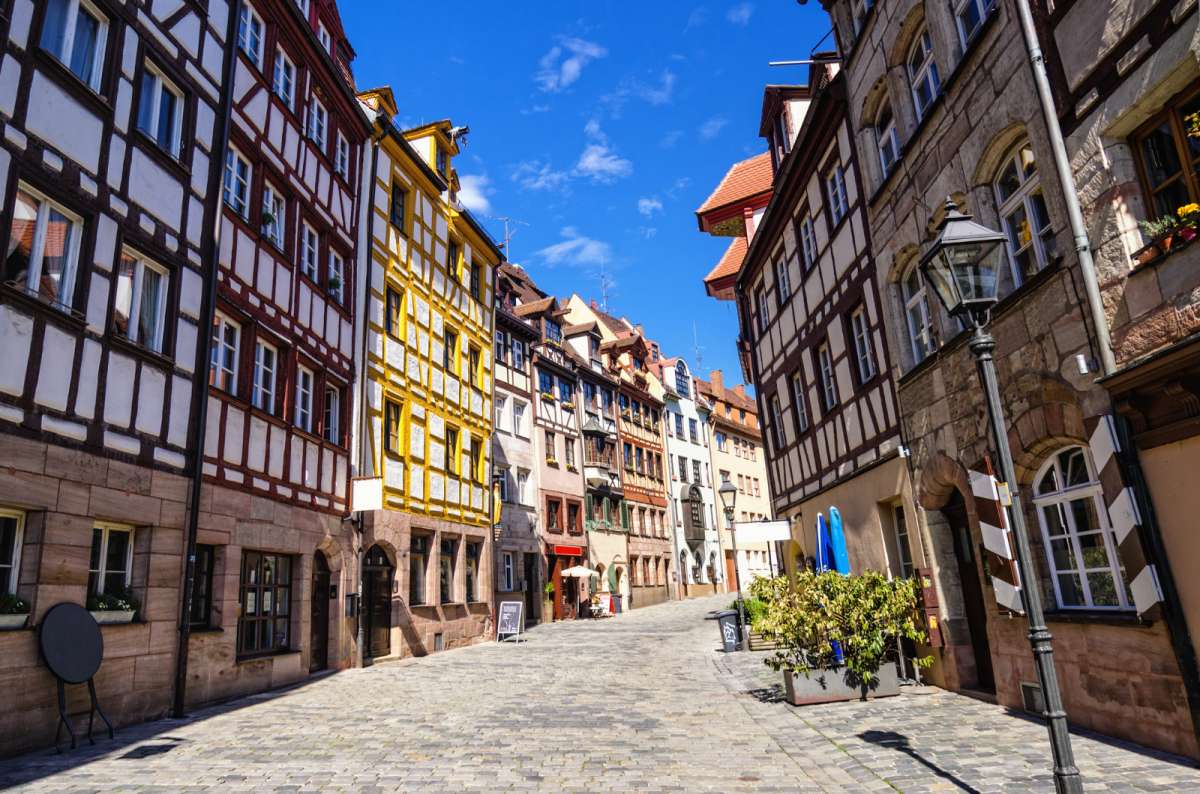
Weissgerbergasse is one of the cutest streets in Nuremberg and it’s not a tourist trap!
-
Time spent here: 1.5 hours
-
Distance from last stop: 3 mins (160 m/0.1 miles)
-
Jan’s notes: Bratwursthäusle is the best bratwurst (sausage) spot in Nuremberg Old Town, so I think it’s clear what you’re having for lunch. It’s right next to St. Sebald.
If there’s one street in Nuremberg that’s almost annoyingly cute, it’s Weissgerbergasse.
Why Weissgerbergasse?
It pulls off being extremely picturesque without feeling too touristy. I almost couldn’t believe my own eyeballs. It’s still just a street with some cafes and small shops, so don’t get too excited, but I think it’s worth a bit of your time.
Head there for 15 minutes to walk, stare, and snap pics of the two dozen colorful, half-timbered houses—many original or reconstructed post-WWII to match the historic style.
Head to St. Sebald Church… for lunch
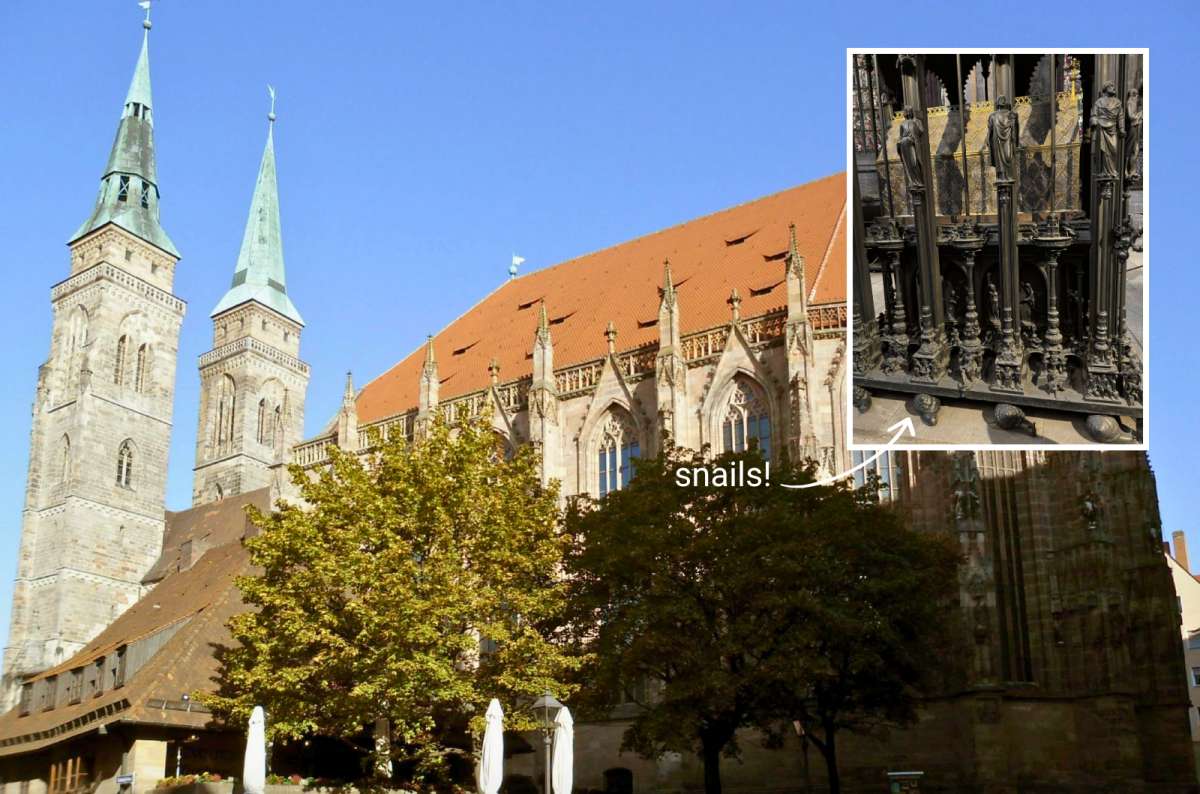
St. Sebald Church is the perfect backdrop for your bratwurst lunch @ Bratwursthäusle
St. Sebald Church is on this Nuremberg itinerary kind of by accident. Not only is it conveniently right at the start of Weissgerbergasse, but, more importantly, it’s where I had the best bratwurst in Nuremberg. And that’s the best reason to go to church if you ask me!
So, um, take a 5-minute peak inside the church, but whatever you do, do not skip the chance to eat at Bratwursthäusle. It has the perfect outdoor sitting area right next to St. Sebald, so you don’t actually need to go inside the church to be able to say you saw it.
Pro tip: One reason you might want to head inside the church is St. Sebald’s tomb—look closely at the base. Yes, those are snails holding the tomb. No, I don’t know why either.
On to the main square!
Stop 4 of Nuremberg itinerary: Hauptmarkt + Frauenkirche
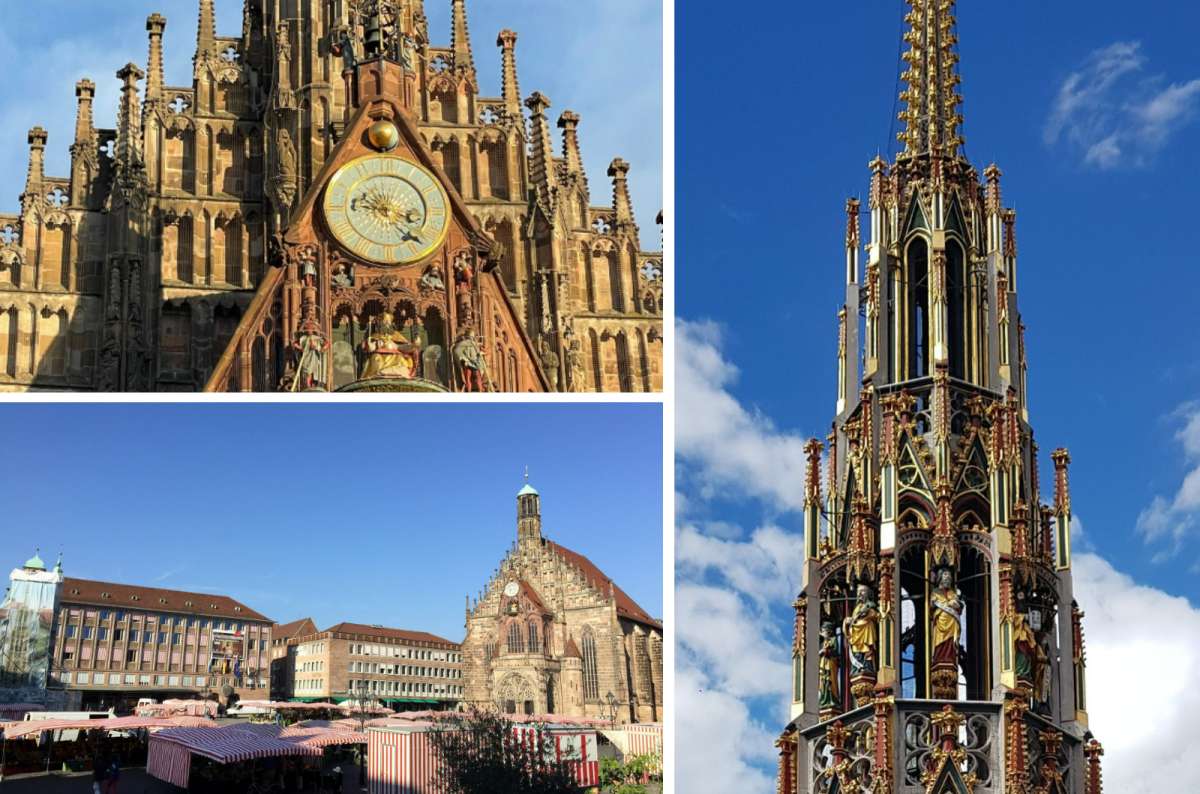
Frauenkirche is yet another great place to visit if you have just one day in Nuremberg. It’s better on the outside than on the inside
-
Time spent here: 20 minutes
-
Distance from last stop: 3 mins (160 m / 0.1 miles)
-
Jan’s notes: It’s the main square. You’re not skipping it.
Just a block towards the river from your sausage lunch lies Nuremberg’s main square called Hauptmarkt (literally “Main Market”).
It’s a big, open plaza that holds a massive daily market, a 14th-century fountain that looks like a golden, gothic rocket ship, and the huge Frauenkirche towering at one end. It’s all very “historic” and “important,” so take a mandatory look around.
First highlight: The “fountain”
The Schöner Brunnen (Beautiful Fountain) is worth a closer look. Don’t be sad when you don’t see any water though, there is none. Legend says spinning the golden ring brings good luck. I spun it. Nothing happened.
The 40 statues on it are a visual representation of the order of the world as the Holy Roman Empire saw it—a mix of religion, power, and education in different tiers.
Second highlight: The Church of Our Lady
As for Frauenkirche (The Church of Our Lady), you’ll notice it right away—it’s as Gothic as the fountain, but bigger.
It was built by Charles IV in the 1300s and still runs a little mechanical show at noon called the Männleinlaufen, where tiny electors spin around a seated emperor. Don’t worry if you’re not there for it, it’s not that amazing.
Inside… it’s a church. Not sure you need to see it, to be honest. Wait for St. Lorenz—it’s coming up in 3… 2… 1…
Stop 5 of Nuremberg Itinerary: St. Lorenz Church & Kreuzigungshof
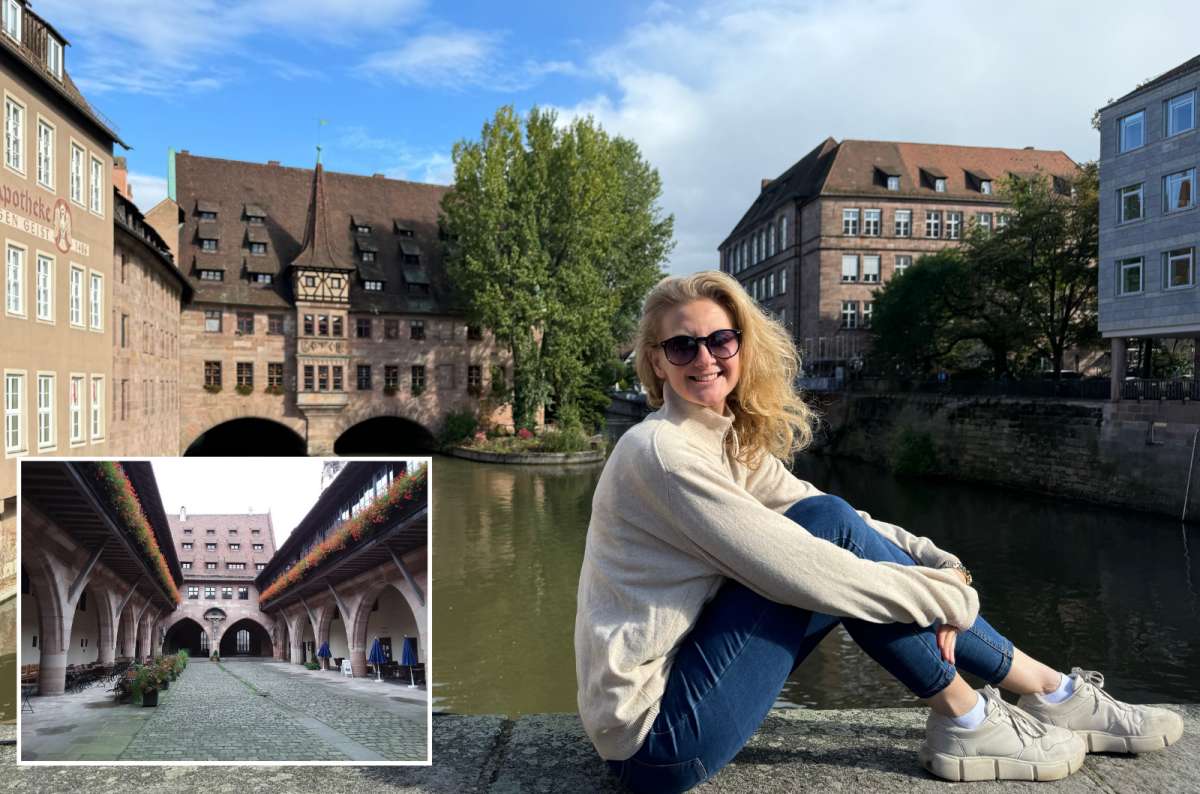
Close to the city center, peaceful, and pretty—a must visit by my book
-
Time spent here: 40 minutes
-
Distance from last stop: 5 mins (400 m / 0.25 miles)
-
Free entry, EUR 2 suggested donation
-
Opening hours: 9:00 am–5:30 pm (Monday–Saturday), and 1 pm–3:30 pm (Sunday)
-
Jan’s notes: Biggest church in Nuremberg = biggest crowds, but the inside is a little disappointing. Kreuzingungshof is a hidden gem that’s quick to visit.
After leaving Hauptmarkt, head toward St. Lorenz Church on the other side of the river. But first, take a peaceful little detour…
Find the crowdless Crucifixion Courtyard
Take a few minutes to find Kreuzigungshof—the Crucifixion Courtyard. It’s a small, calm courtyard surrounded by old monastery walls, tucked inside the old Heilig-Geist-Spital complex, which stretches over a narrow branch of the river. Most people just look at the buildings from the bridge, but not you!
Take 15 minutes to 1) find the place and 2) revel in the peace before heading to Nuremberg’s biggest church.
Fun fact: The life-size crucifixion scene in the middle was originally from a cemetery that no longer exists. What you see here now is a copy—the original’s in the Germanisches Nationalmuseum that you’ll be going to later.
Taking on Nuremberg’s largest church: St. Lorenz
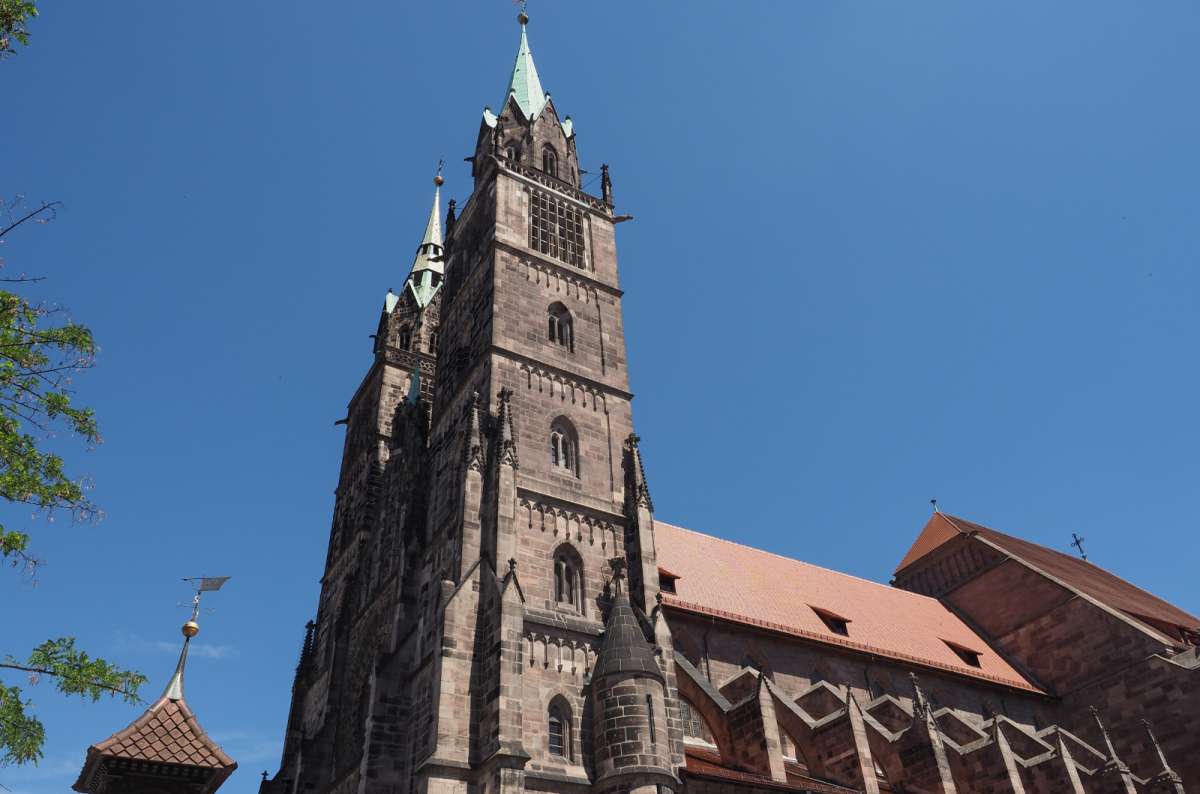
St. Lorenz Church serves as proof that quiet crowds are still crowds
Then head to St. Lorenz Church, which is... not quiet. I mean, it technically is—people aren’t shouting or anything—but you’ll feel the weight of the crowd the second you step anywhere near the church. That’s because no Nuremberg day trip is complete without a visit to this church.
I don’t like crowds. Even well-behaved, trying-to-whisper ones. But this is Nuremberg’s top church, so it’s to be expected.
St. Lorenz is big and very gothic: twin towers, massive rose window, and, inside, a ridiculous organ with 12,000 pipes. If you like grand churches, this one’s your guy. To be honest though, I thought it was underwhelming.
Pro tip: This church also has a fantastic restaurant right next to it. Laurentius Café-Restaurant is delicious—could be useful if you don’t want just sausage for lunch.
Don’t linger and head to the Germanic National Museum. I’ll tell you how to see this massive place in a cool 60 minutes.

Stop 6 of Nuremberg Itinerary: Germanisches Nationalmuseum
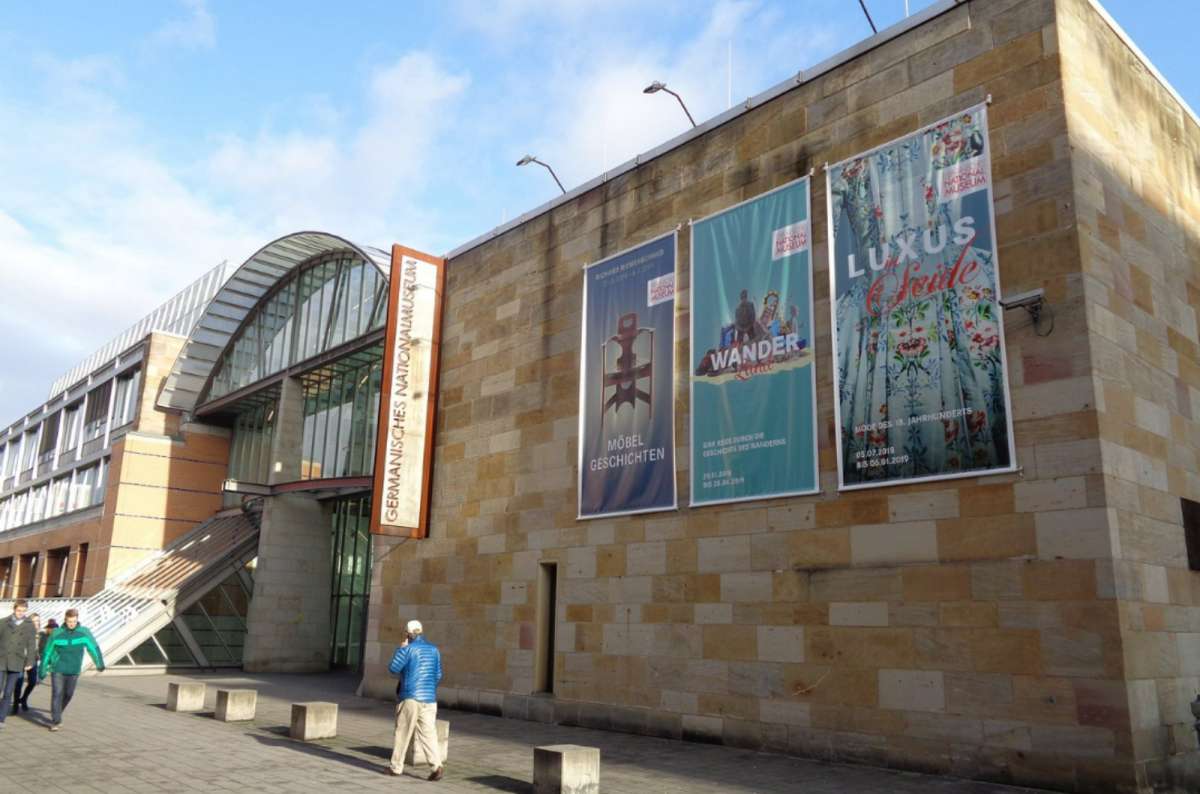
The Germanisches Nationalmuseum has just about everything for just about anyone
-
Time spent here: 1 hour
-
Distance from last stop: 7 mins (600 m / 0.4 miles)
-
Entry: EUR 10
-
Opening hours: 10 am to 6 pm (Tuesday–Sunday), and 10 am to 8:30 pm (Wednesday)
-
Jan’s notes: It’s huge! You won’t see it all, so don’t even try. Use the highlight audio guide that takes just 1 hour or stay in Nuremberg another day if that seems rushed.
I don’t usually have patience for massive “everything” museums, but Germanisches Nationalmuseum actually surprised me. It’s the largest cultural history museum in the German-speaking world—which sounds intimidating, and kind of is.
Since you only have a day in Nuremberg, you’ll need to focus like someone panic-reading a menu five minutes before the kitchen closes. Luckily, they have an audio guide for that.
Grab the 60-minute highlight audio guide
There are 25,000+ objects on display at any given time, from medieval armor and altarpieces to fashion, musical instruments, scientific gear, and even toys. There’s something for everyone... which also means there’s a ton you’ll want to breeze through.
I found a lot of it fascinating and much of it skippable. There are 4 floors. With the audio guide, you won’t have to waste time trying to figure out what’s good.
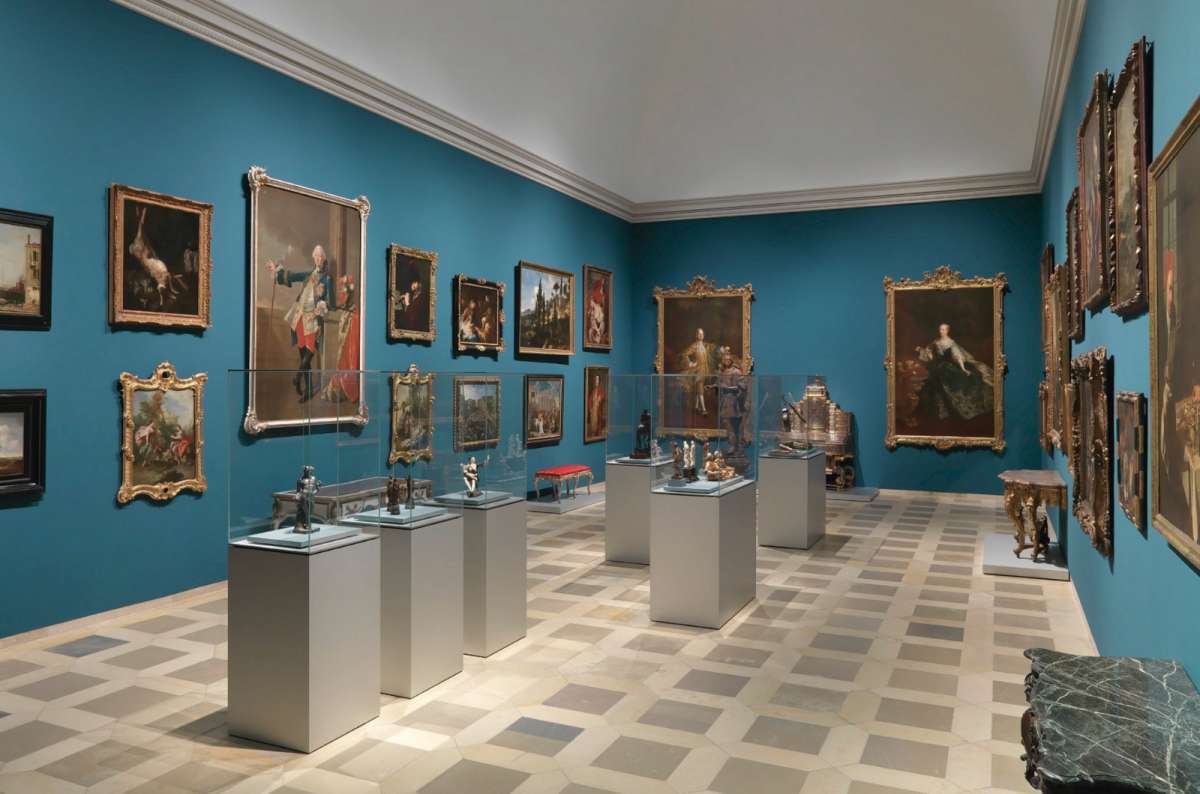
One of the few ”everything museums” that passes the test and is worth your time @ Germanisches Nationalmuseum
Pro tip: I recommend the temporary exhibition called “Connected Worlds” (it’s showing in summer 2025). It’s a nice showcase of how connected the world has been for centuries—comparing modern jeans and 18th-century silk, etc.
Don’t miss the gems like the oldest surviving globe in the world (no America on it yet—Columbus had barely finished sailing when they made it in 1492!), Renaissance paintings, and some weird religious artifacts that make you realize medieval life was deeply troubling.
Now, before we dive headfirst into 20th-century horror at the Nazi Rally Grounds, you deserve a bit of a brain break. I can’t believe I actually liked this place, but I did: a tiny fake medieval village built in the 1970s: Handwerkerhof.
Stop 7 of Nuremberg Itinerary: Handwerkerhof
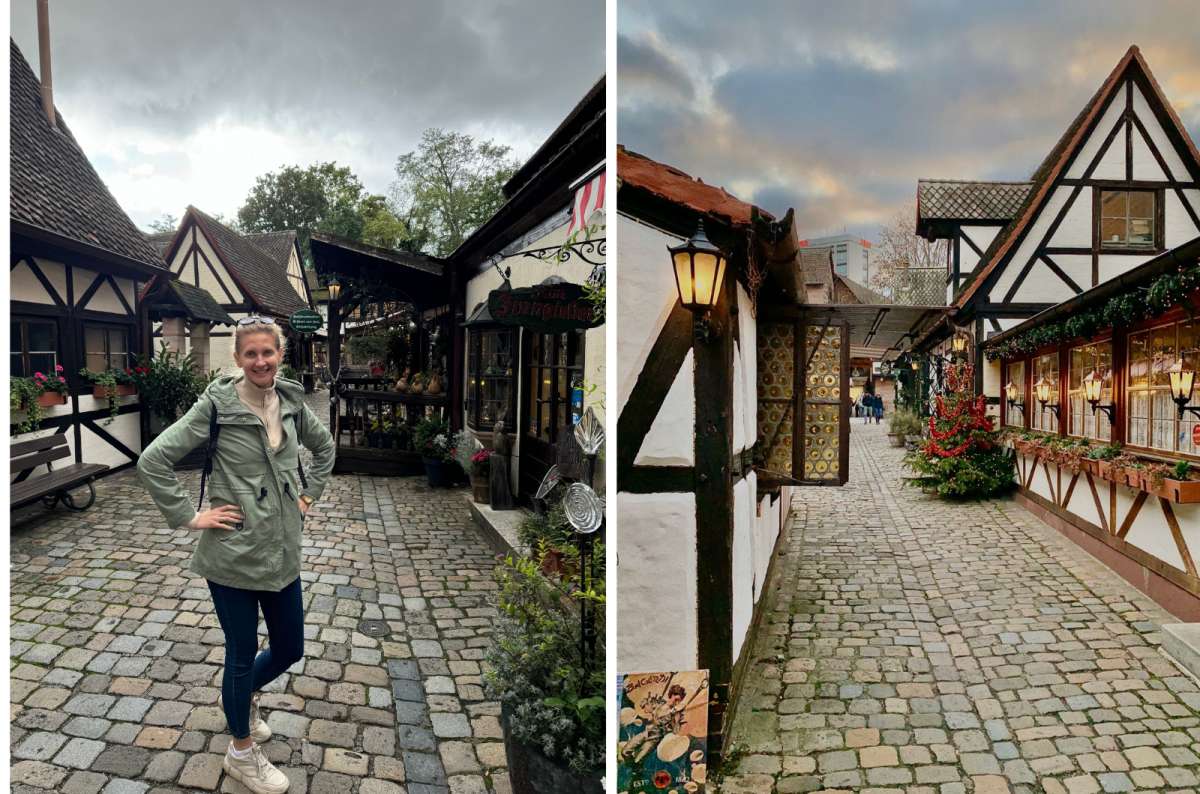
Similar to the Weissgerbergasse, Handwerkhof is also one of those places begging to be on somebody’s Instagram
-
Time spent here: 30 minutes
-
Distance from last stop: 8 mins (650 m / 0.4 miles)
-
Free entry
-
Opening hours:
-
Gates are open daily from Monday to Saturday from 8 am to 10 pm and Sunday from 8 am to 8 pm
-
All shops are open from Monday to Saturday 11 am to 6 pm
-
-
Jan’s notes: It’s like a Disney village from the Middle Ages, but somehow it feels authentic too?
We walked to the southern edge of Old Town towards Königstor (King’s Gate) and explored this tiny fake village (it really is much smaller than I thought it would be). Welcome to Handwerkerhof—the “Craftsmen’s Courtyard,” or as I like to call it, Nuremberg’s least offensive tourist trap.
After battling crowds, gothic organs, and 25,000 museum artifacts, I felt it was time for coffee, snacks, and souvenirs, medieval style. And I didn’t hate it!
Cobblestones, timbered façades, workshops selling things like handmade leather goods and candles you’ll never light... it’s cute, I guess. It’s much less touristy-feeling than you’d expect.
There are taverns and bratwurst stands if you’re peckish again, or just grab a coffee.
It’s not a must-see, but it is a well-timed see.
Stop 8 of Nuremberg Itinerary: Nazi Party Rally Grounds
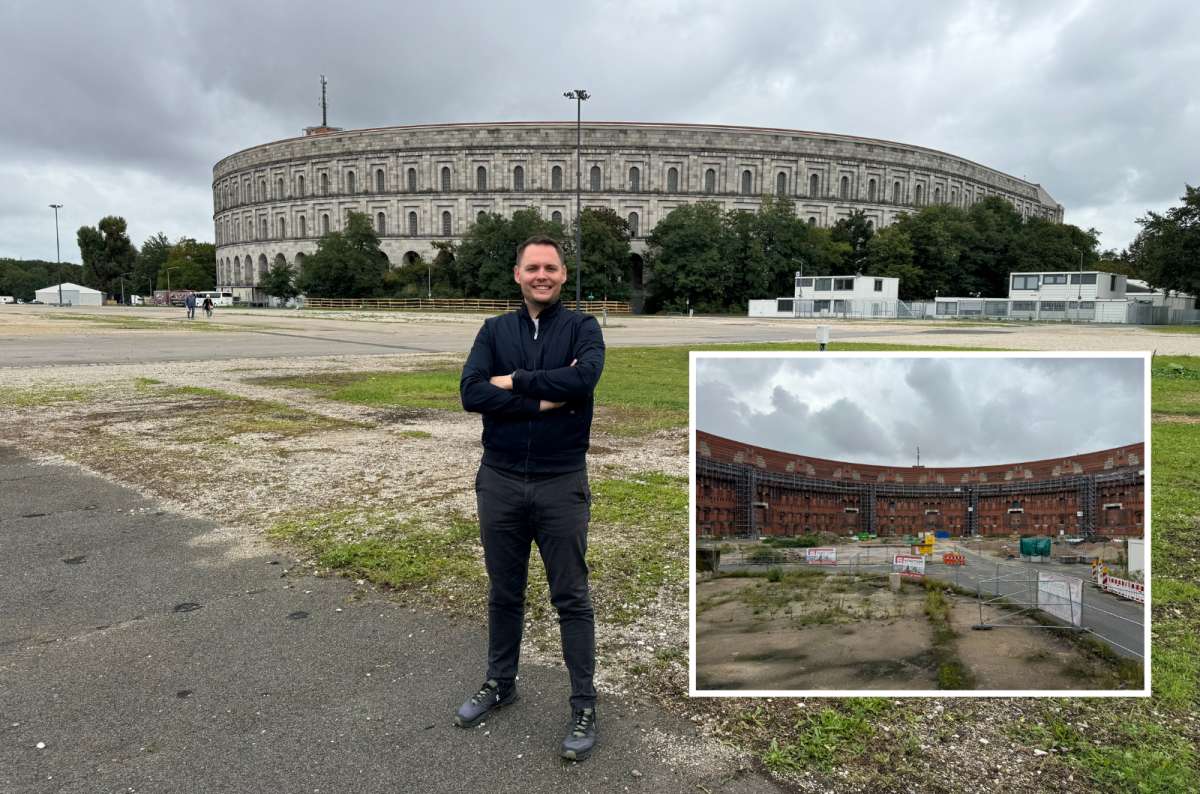
The Nazi Rally Party Grounds
-
Time spent here: 1 hour
-
Distance from last stop: ~15 mins by car or taxi
-
Tickets: EUR 7.50, parking costs EUR 5
-
Opening hours: daily 10 am–6 pm
-
Jan’s notes: You're leaving the Old Town—grab your car now if you're staying at Park Plaza Nuremberg. Don’t forget this place and the next both close at 6 pm.
I hope you enjoyed your rest, because now it’s time to shift gears and go deep into horrific Nazi history. I know what you’re thinking—what a pleasant way to end your Nuremberg itinerary!
You’ll need a car to get there
If you’ve got a car and you're staying at the Park Plaza Hotel (which is conveniently right by Handwerkerhof—you see how I think these things through to make exploring Nuremberg easy for you?), now’s the perfect moment to grab it. Otherwise just take a taxi.
You’re heading outside the city walls for the last two stops of the day—and they’re heavy ones. And they close at 6 pm, so chop chop. It’s a 10–15 minute drive depending on traffic.
What to expect at the Nazi Party Rally Grounds
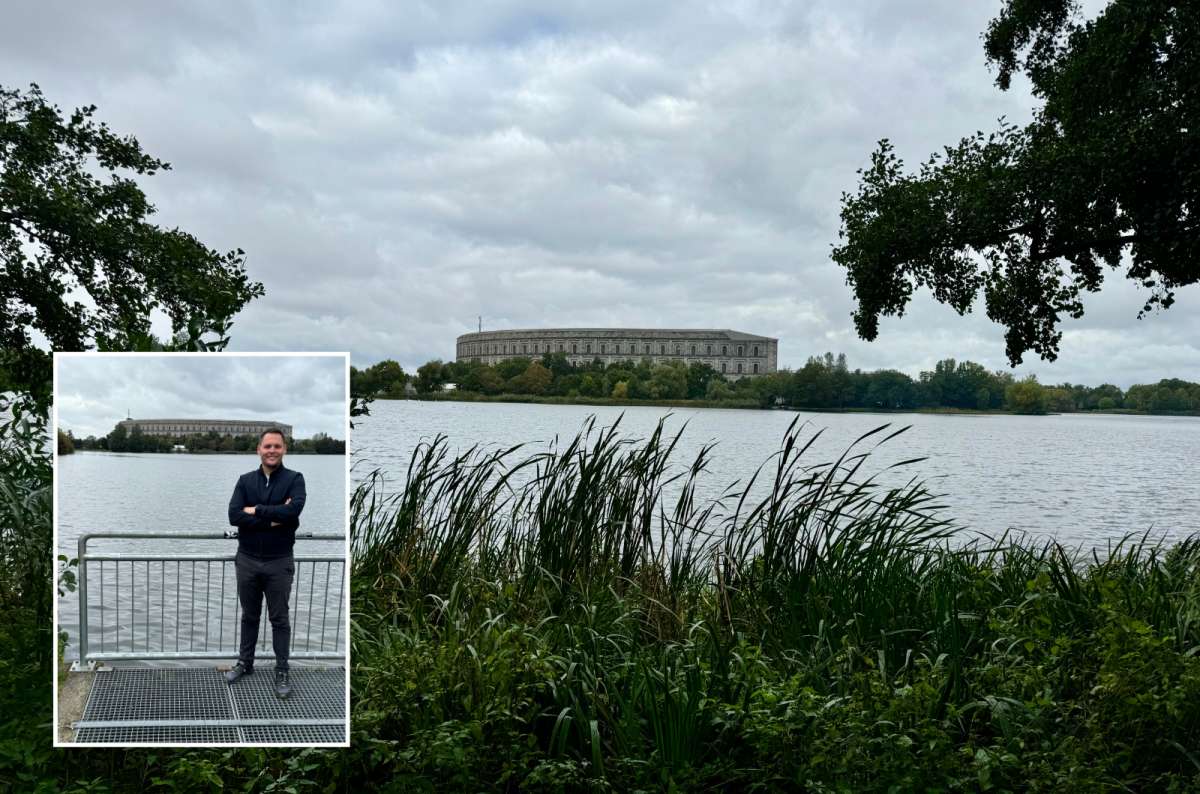
View of the Nazi Party Rally Grounds from across the lake
The Nazi Party Rally Grounds is where the Nazi regime held its propaganda rallies, Heil Hitler-ing to oblivion and intimidating everyone by building massive structures. So obviously, it’s not “interesting” in the fun sense. It’s more like—this really happened here, and then your brain tries to understand how that’s possible.
The museum inside the Documentation Center is under renovation in 2025, so you won’t get the full indoor exhibit. But it’s still worth going. I went when it was even more closed off than it is now and the whole place still made an impact on me.
You can walk around the Congress Hall, which is huge and completely dead inside—no windows, no decorations, just this massive brick shell. I don’t know, it’s just a weird feeling walking around there.
There are some signs and temporary exhibits outside. I’d encourage you to stop and actually read them—not just to learn what happened, but how it happened.
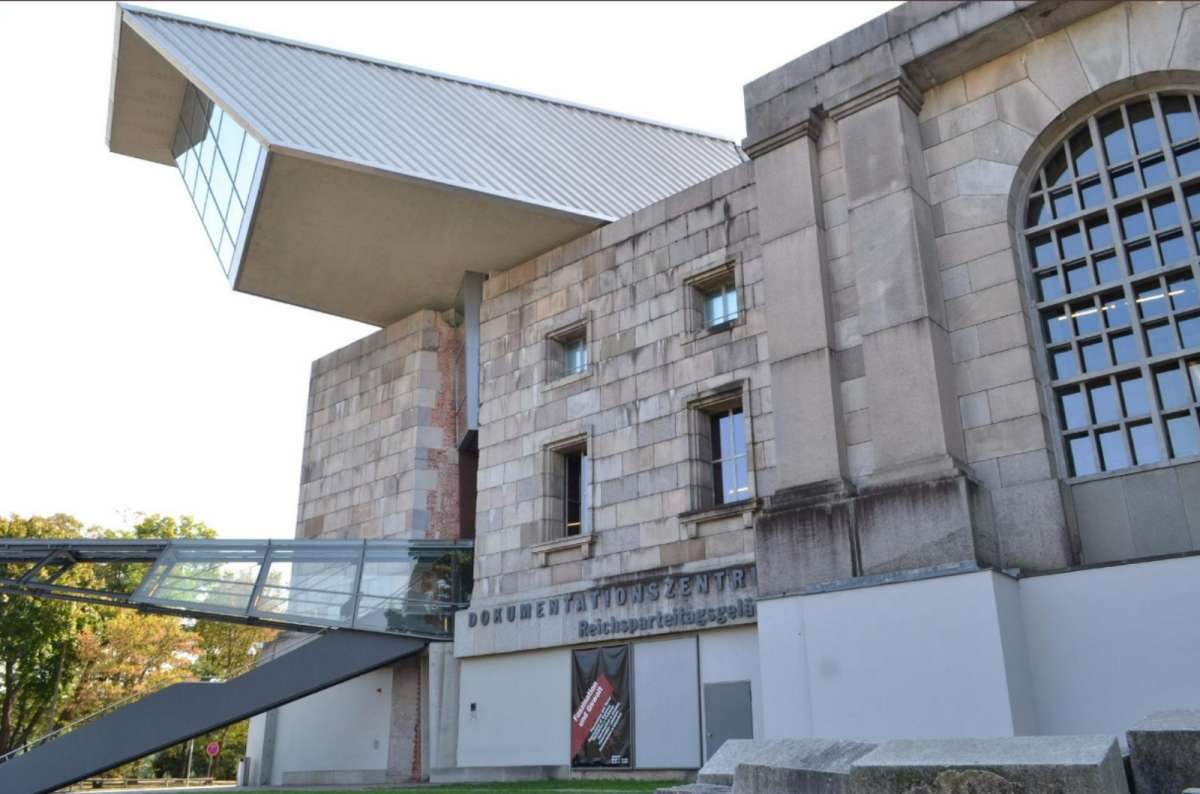
The Documentation is still under renovation in 2025, but there are temporary exhibits outside in the meantime
Jan’s take: It’s unsettling how fast fear, lies, and blind loyalty can snowball when the wrong people get into power. The fact that it all looked “normal” at first is the scariest part. And honestly, with the way things are going right now—authoritarians rising, conspiracy nonsense spreading like wildfire, people voting based on fear and fake news—it doesn’t feel like history at all. Some current politicians and their buddies would fit right in here.
What to skip
I also went out to the Zeppelin Field—the big open-air stadium where Hitler gave those over-the-top speeches to tens of thousands of people. Don’t go, it’s not worth it. It’s overgrown, mostly empty, and just sits there with no real interpretation or direction.
Remember to keep an eye on the time. The next stop—the Nuremberg Trials Memorial—closes at 6 pm too. I know you may be feeling your busy day starting to catch up with you, but I promise the Trials are the ending you need to really understand Nuremberg’s importance.
Stop 9 of Nuremberg Itinerary: Nuremberg Trials Memorial (Courtroom 600)
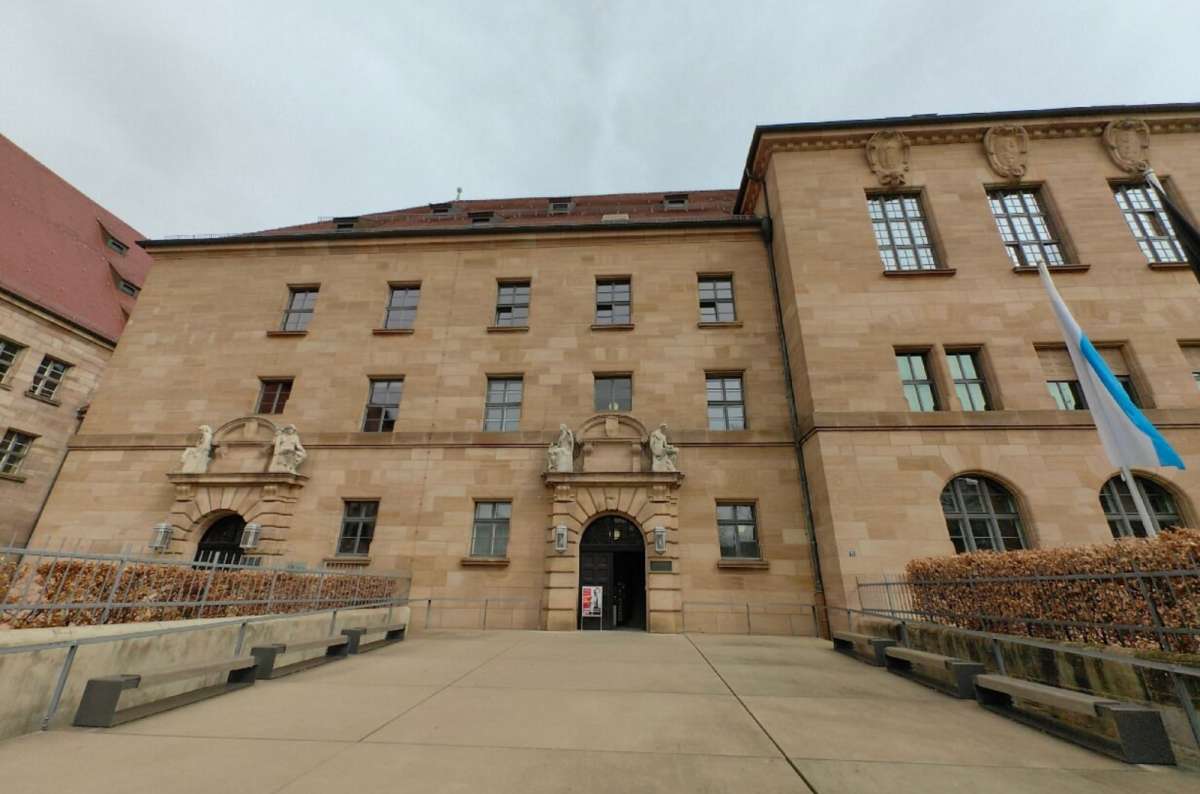
Where karma finally caught up to the bad guys @ Nuremberg Trials Memorial
-
Time spent here: 45 minutes
-
Distance from last stop: ~10 mins by car
-
Entry: EUR 7.50
-
Opening Hours
-
10.00 am to 6.00 pm (Wednesday to Monday)
-
Closed on Tuesday
-
-
Jan’s notes: Last stop of the day. If you’ve made it this far, finish strong.
After walking through where the Nazis rose to power, you finish your day in Nuremberg where they finally got what was coming to them—Courtroom 600, inside the Nuremberg Palace of Justice.
This is where the top Nazi leaders were put on trial. There’s a small but solid exhibition upstairs that gives just enough information about who was tried, what they were charged with, how it changed international law.
In summary, out of the 24 major defendants:
- 12 were sentenced to death by hanging (though Göring offed himself the night before his hanging with a cyanide capsule. Coward.)
- 7 got prison time
- 3 were acquitted
- 1 killed himself before the trial even started
- 1 was too old and senile to stand trial
Courtroom 600 is still a working courtroom today, so sometimes you can sit in the actual room, other times it’s behind glass. Either way, it’s worth seeing.
This stop didn’t take me long to visit and it’s not at all flashy, but I encourage you to go. After everything else you’ll see in Nuremberg, this is the part that puts it all into perspective—how bad it got, and what it took to respond to it properly.
Then go to dinner.
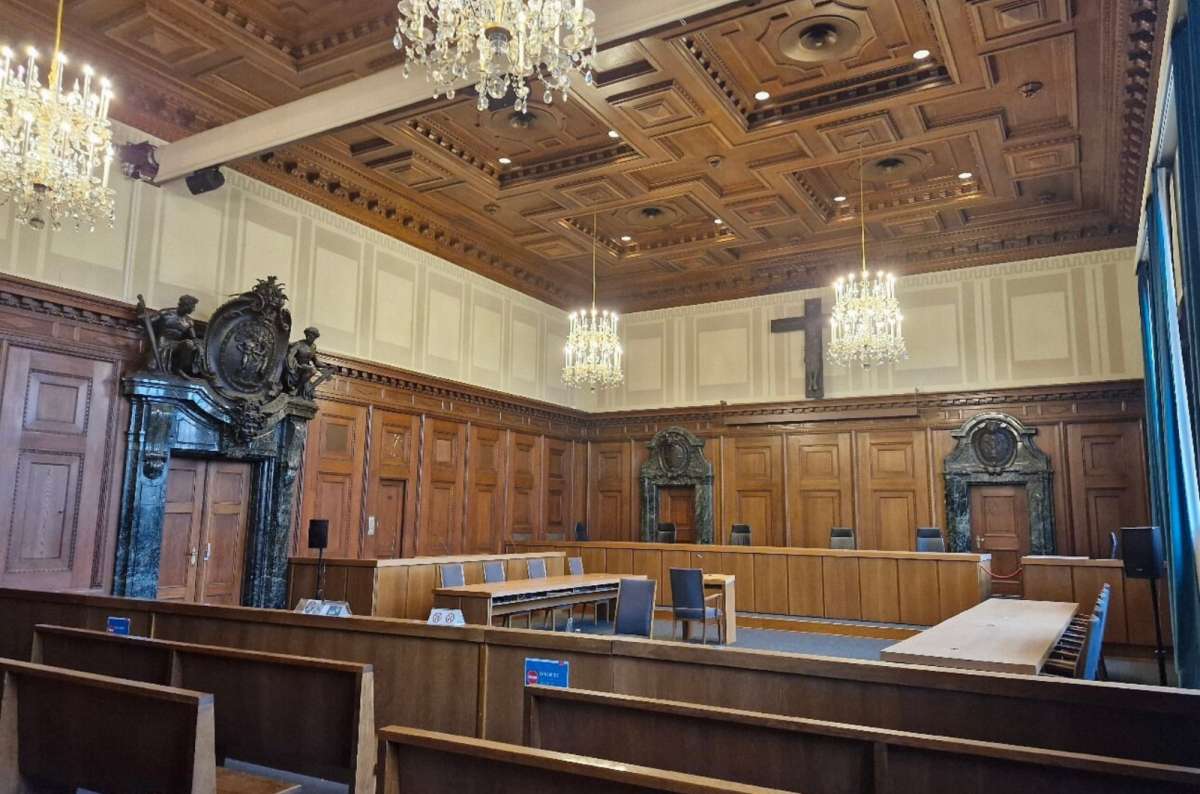
Probably one of the most important courtrooms in the world @ Courtroom 600
My favorite restaurants in Nuremberg for lunch, dinner, and coffee
- Tucher-Bräu am Opernhaus: Everything you hoped traditional German food would be and more. Excellent quality food, lots of locals (menus are only in German), good mix of Bavarian and modern design, huge outdoor sitting area. Open until late.
- globo Restaurant: If you’re over dumplings and bratwurst, try this restaurant for dinner. Think truffle cream, salmon filets, and sous vide chicken, as well as a more modern take on traditional local dishes. They are open for lunch—pause for siesta—and then dinner until late.
- Laurentius Café-Restaurant: This place is right beside St. Lorenz Church (aka tourist central), which makes it even more impressive how good the food and service is. They serve everything from dumplings and schnitzel to veggie burgers and fancy salads. They close at 9:30 pm, so don’t come here for a late dinner. Perfect for lunch.
- Bratwursthäusle near St. Sebald Church has the best sausages in Nuremberg. Apparently they’ve been at it continuously since the Middle Ages. There’s an indoor and outdoor sitting area. All very German. But really, it’s just bratwurst and beer, so come wanting bratwurst and beer.
- POCKETS Café: A cool and cozy place for coffee Nazis that also like good sandwiches and pastries. Try the apple pocket (or any of the other myriad of pockets).
Additional stops (if you want to swap or decide to stay another day)
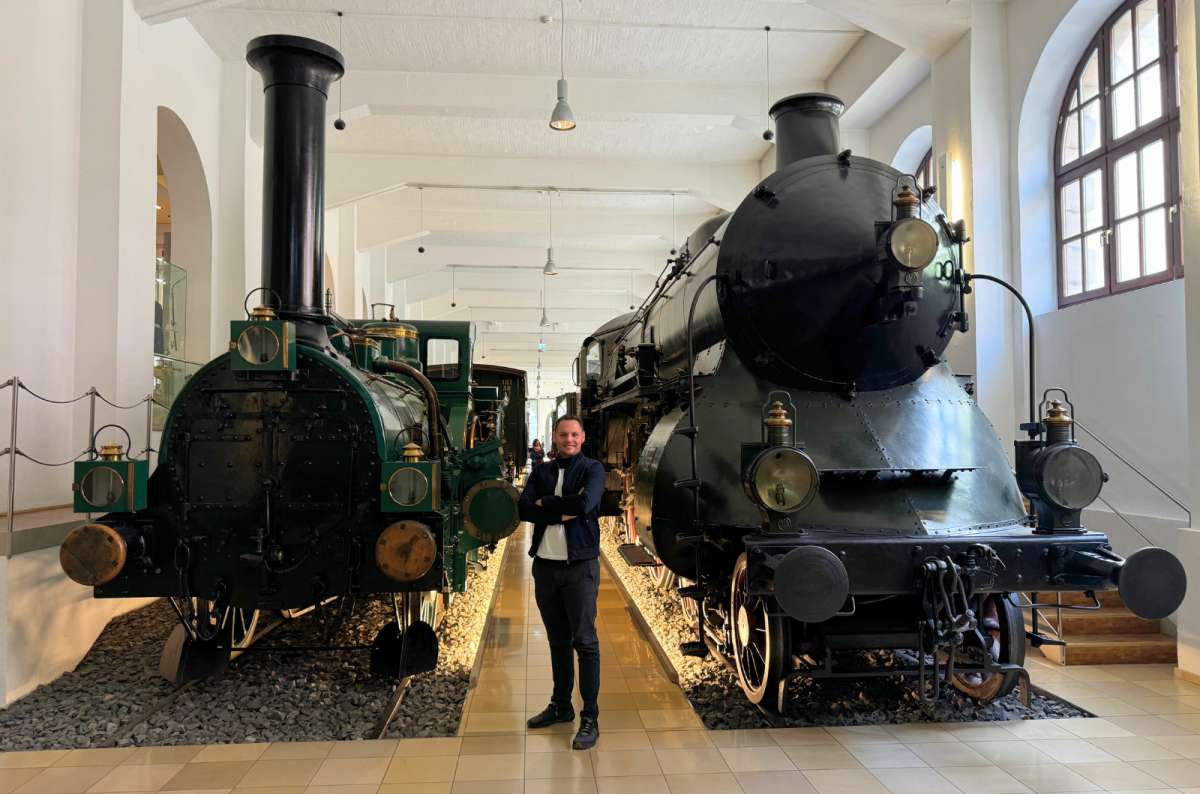
There’s nothing wrong about finding trains interesting...right? @ Deutsche Bahn Railway Museum
Still have time or skipped a stop a three? Here are a few extras worth checking out—just don’t try to cram everything into a day… days in Nuremberg still only have 24 hours just like everywhere else:
-
Toy Museum—Great if you’re traveling with kids, not so much for just adults unless you are really interested in toys.
-
Deutsche Bahn Railway Museum—Swap this in if you're more excited about trains than altarpieces. It’s a fantastic museum.
-
Ehekarussell—A bizarre fountain that shows the stages of marriage… from flirtation to death. Just a quick stop but requires you to diverge slightly from the main route of this itinerary.
-
Henkersteg—A photogenic wooden bridge and tower once used by Nuremberg’s executioner. Today, it’s good for a quick stroll and a photo.
For more details about my visit to these spots, check out my Things to Do in Nuremberg guide where I call out the highlights and the tourist traps.
Where to next?
About an hour’s drive from Nuremberg is Regensburg, a small city with an Old Town that is part of UNESCO World Heritage.
Unlike Nuremberg, Regensburg was largely spared from bombing during WWII, so much of the medieval buildings are original, unlike those in Nuremberg. Aside from very old and picturesque buildings, bridges, and palaces, you also get, for example, the giant neoclassical ego monument called Walhalla. You’ll feel like you’re in Greece for a moment when you see it.
If you have time for a proper German vacation, Nuremberg is the perfect start to a week in Bavaria. This southeastern corner of Germany has beautiful lakes, the Alps, Hilter’s Eagle’s Nest, and the fairytale Neuschwanstein Castle. And it’s all centered around Munich, which makes getting in and out easy.

FAQs about your one day in Nuremberg
Is Nuremberg worth visiting for just one day?
Yes—Nuremberg is compact, packed with history, and easy to walk. You can see a lot in a day if you plan smart (which you’ve now done). Just don’t waste time wandering without a plan—this isn’t Venice. If you’re trying to do this Nuremberg itinerary, you’ll need a full day.
Is Nuremberg a walkable city?
Inside the Old Town, which is where most tourist interest spots are, absolutely. Everything on this itinerary is walkable until you head to the Nazi Rally Grounds and the Courthouse. For those, you’ll want a car or a taxi.
What’s the best time to visit Nuremberg?
Late spring and early fall are ideal to avoid the biggest crowds and highest hotel prices. Summer is fine but crowded, which is to be expected. Winter can be beautiful if you're into lights and freezing your face off. The Christmas market is magical and mulled wine makes everything a little more cheerful despite the cold weather.
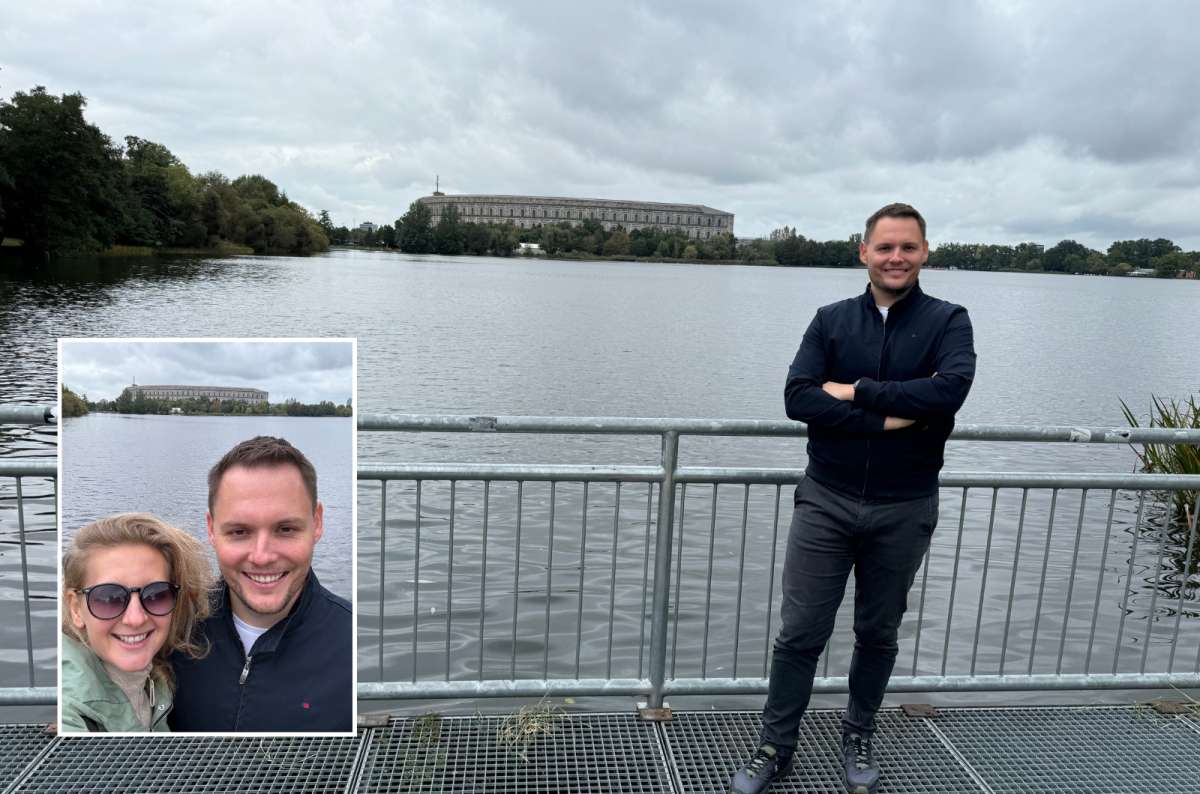
Make sure to wear something warm, especially if you visit the Nazi Rally Grounds, not only does the place send shivers down your spine as it is, but it can get chilly by the water
Where do I park in Nuremberg?
If you’re driving in, park at your hotel (I recommend Park Plaza—it’s central and lets you grab the car easily before heading out of town). There are public garages too, but they fill up fast, especially near the train station and castle.
Do I need to buy tickets in advance for any of these sights?
Not really. Everything in this itinerary can be visited without pre-booking. Just watch the closing times—especially for the Nazi Rally Grounds and the Nuremberg Trials Memorial (both shut at 6 pm sharp).
Why isn’t Nuremberg a UNESCO site?
Because most of it was rebuilt after WWII. It looks historic, and it is, but not in the untouched way UNESCO likes. There was a lot of rebuilding and reconstruction that had to happen. Go to Regensburg if you want original.
Is this itinerary kid-friendly?
Mostly yes, but obviously the Nazi history part is heavy and requires parental guidance or, with young children, avoiding it altogether. And there’s a lot of walking. If you’ve got younger kids, the train or toy museums will be a better fit.
Is this really everything you need to see in Nuremberg?
Yes, for one day. But if you are staying longer, check out my Things to Do in Nuremberg guide for the hits and the skips.
You might also be interested in reading:
Sometimes, all you need to do is take the first step... I've filtered out the best hotels in Nuremberg for you.
Save it for yourself to come back to later, or share with your friends on social media!
This post contains affiliate links. If you make a booking through one of my links, I may earn a small commission—at no additional cost to you. Thank you for your support!





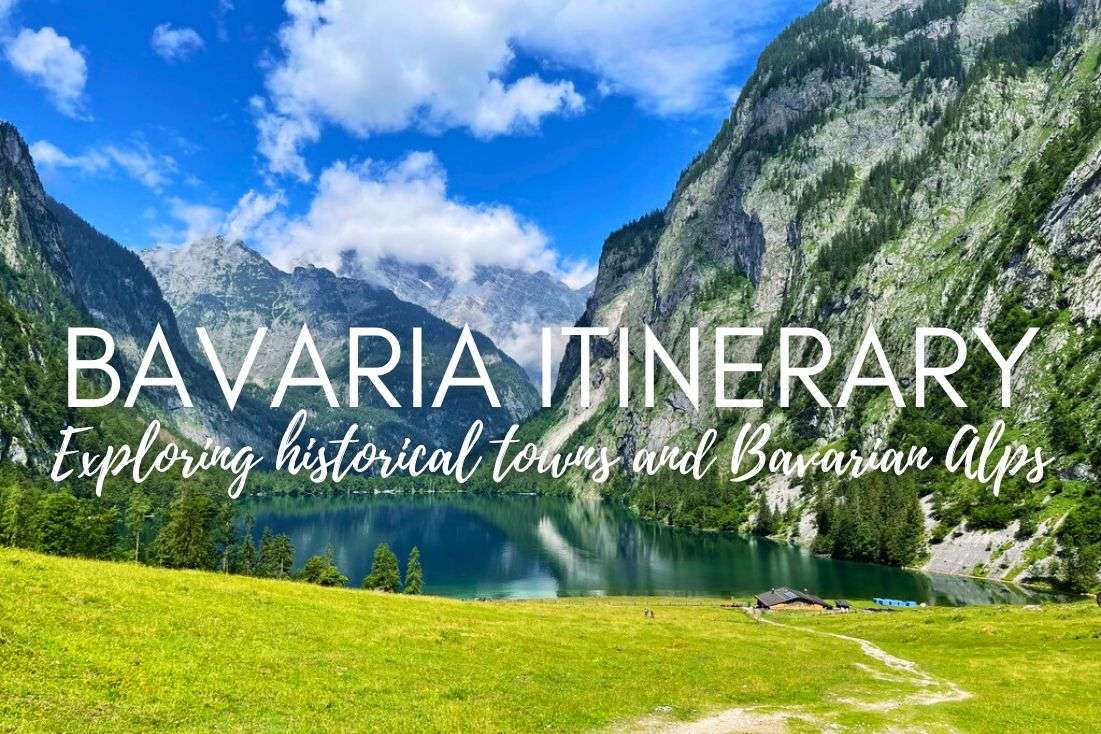
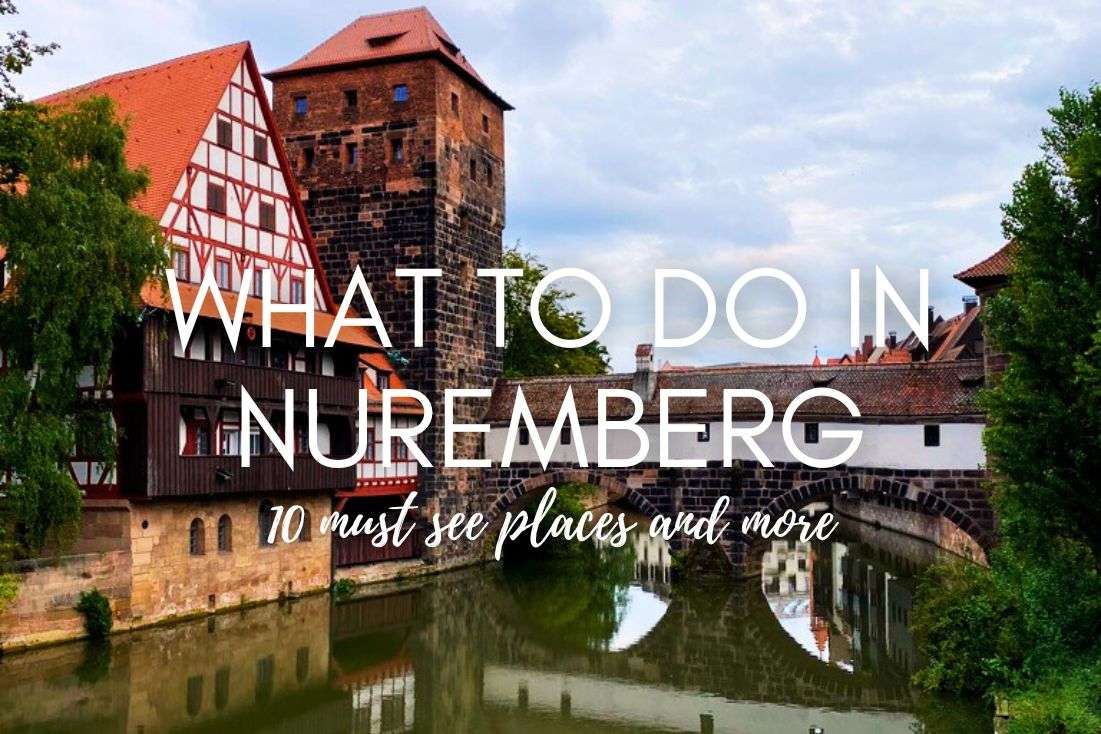



Comments | Thoughts? Give us a shout!